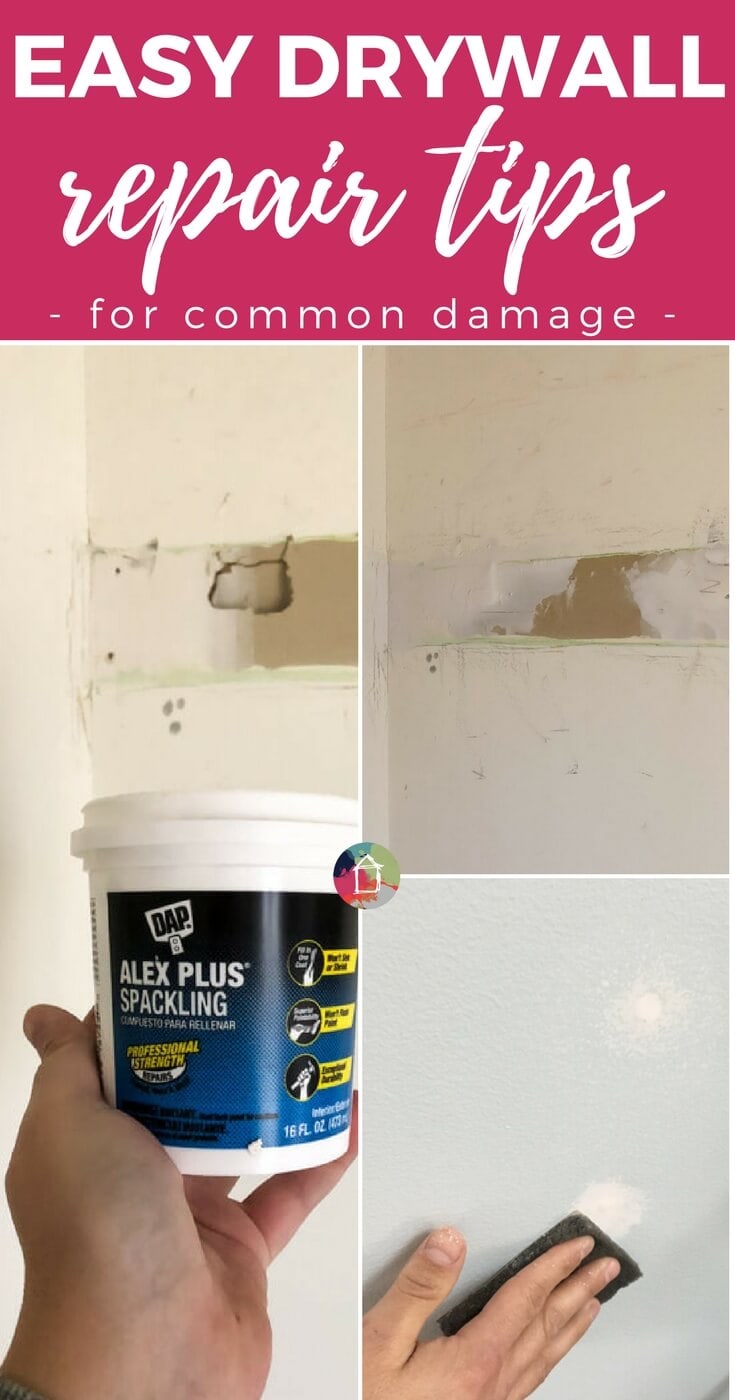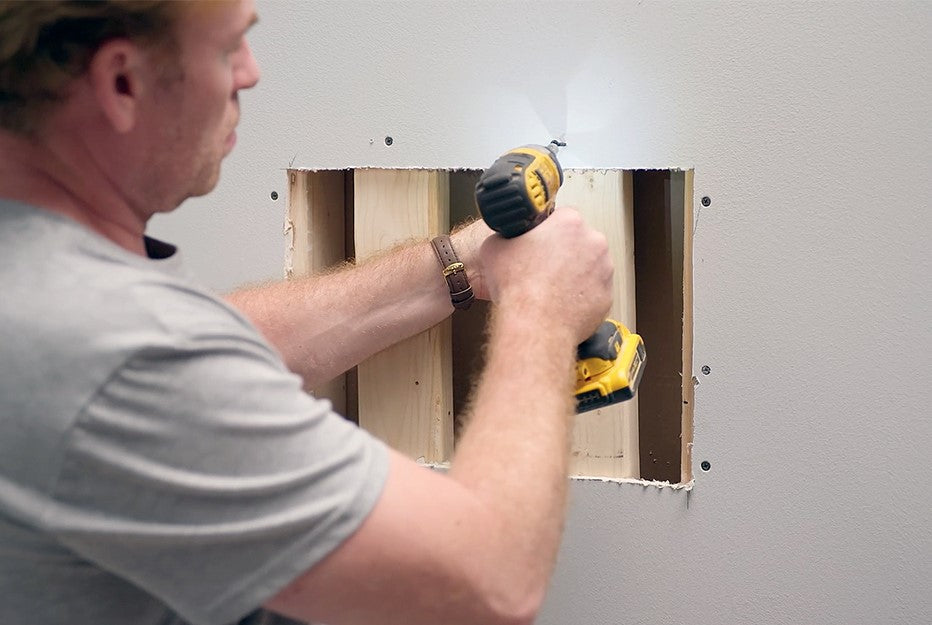Drywall Repair Ogden UT offers reliable services that blend perfectly with Interior Painting.
Essential Tips for Effective Drywall Fixing and Setup Strategies
Reliable drywall repair service and installation needs a cautious technique. Recognizing the sorts of drywall and having the right tools is vital. Proper methods and exact dimensions can substantially influence the result. Numerous overlook important steps like taping and sanding, which can make or damage the final look. As jobs advance, common obstacles may emerge that need attention. Exploring these tips can lead to an extra refined and successful coating.
Recognizing Various Kinds Of Drywall
Understanding the various kinds of drywall is vital for any effective repair work or installation job. Drywall, frequently called gypsum board, is available in several varieties customized for specific applications. Standard drywall is one of the most commonly used type, perfect for general interior wall surfaces and ceilings. Moisture-resistant drywall, often environment-friendly in shade, is made for areas vulnerable to humidity, such as cooking areas and restrooms. Fireproof drywall, normally tinted pink or purple, is engineered to withstand greater temperatures and is commonly used in garages or near heaters. Additionally, soundproof drywall helps in reducing sound transmission, making it appropriate for multi-family homes or tape-recording studios. Specialized drywall, like concrete board, is made use of in damp locations like showers or bathtub borders. Understanding these types helps in picking the right product for each project, ensuring resilience and effectiveness in repair services or new setups.
Necessary Devices for Drywall Repair and Installment
Having the right devices is vital for efficient drywall repair service and setup. A quality energy knife is essential for cutting drywall sheets precisely. A drywall T-square helps guarantee straight sides, while a taping blade is required for using joint compound efficiently over joints. Additionally, a drywall saw permits for removing harmed areas or fitting drywall around fixtures.
For hanging drywall, a power drill with drywall screws is essential, as it enables quick and secure setup. A level is additionally crucial to verify that the drywall is straight and properly lined up. A sanding block or post sander is vital for raveling joint compound once it has dried. Ultimately, a gauging tape is vital for accurate measurements, protecting against waste and making sure a correct fit. Geared up with these tools, individuals can take on drywall jobs effectively, causing professional-looking outcomes.
Step-by-Step Guide to Repairing Holes and Cracks
When dealing with openings and fractures in drywall, having the right devices and products is essential for an effective repair. This guide details the essential products and gives a clear, step-by-step procedure to successfully recover the surface. Recognizing these elements will help ensure a seamless surface and resilient outcomes.
Tools and Materials Needed
A well-appointed toolkit is crucial for efficient drywall fixing and installation. Secret devices include an utility blade for reducing drywall, a tape procedure to assure exact sizing, and a drywall saw for bigger holes. A putty knife is vital for applying joint substance smoothly, while a sanding block or post sander aids attain a smooth coating. For patching, a roll of fiberglass mesh tape or paper tape is required to strengthen joints. Furthermore, a drill and screws are required for securing brand-new drywall pieces. Essential materials contain joint substance, guide, and paint to complete the repair. Having these tools and materials available ensures a smoother, more efficient repair process, yielding professional-looking outcomes.
Repair Work Process Actions
Fixing openings and cracks in drywall calls for an organized method to ensure a seamless coating. First, the area surrounding the damages should be cleaned completely to remove dirt and debris. Next, for small splits, a putty blade is utilized to apply a joint compound uniformly over the location. For larger holes, a spot is needed; the damaged area is removed, and a new item of drywall is suited location, secured with screws. As soon as the spot is in setting, joint compound is used to blend the edges. After drying out, sanding the location smooth is important. Ultimately, the page repaired surface needs to be topped and repainted to match the bordering wall surface, ensuring a low-profile fixing.
Strategies for Setting Up Drywall Panels
Mounting drywall panels requires careful planning and specific implementation to guarantee a expert and smooth surface. Initially, it is necessary to gauge the wall surface space properly and cut the panels to fit, making sure that they line up with the studs. Placing the panels horizontally is usually recommended, as this can boost the architectural honesty and reduce the variety of joints.
Making use of drywall screws, installers need to safeguard the panels every 16 inches along the studs, making sure a company hold. It is crucial to avoid overdriving the screws, which can damage the paper surface. For edges and corners, using an utility knife permits tidy cuts and a tight fit.

Ending Up Touches: Taping, Mudding, and Sanding
As soon as the drywall panels are firmly in place, the following important step includes the complements of taping, mudding, and sanding. Taping is essential for creating a smooth change between panels and concealing joints. A high quality drywall tape, either paper or fiberglass harmonize, should be applied over the seams, guaranteeing it sticks effectively to the mud that will certainly be applied next.
Mudding, or applying joint compound, complies with the taping process. This substance fills voids and smooths out the surface area. A first layer should be applied generously, feathering the edges to mix with the drywall. After the preliminary layer dries, succeeding layers might be required for a remarkable coating.
Finally, sanding is necessary to achieve a smooth surface. A fine-grit sandpaper needs to be utilized to gently smooth out any type of blemishes. Care ought to be taken to avoid over-sanding, which can damage the drywall - drywall contractor. Effectively carried out, these completing touches create an expert appearance prepared for painting
Tips for Maintaining Your Drywall After Installment
Preserving drywall after installation is important to preserving its look and structural integrity. Normal cleansing is essential; dust and dirt can build up, so mild cleaning with a damp cloth is recommended. Homeowners need to additionally examine for any indicators of wetness or mold, specifically in high-humidity locations like washrooms and kitchens. If any type of damage happens, it's essential to resolve it immediately to stop more concerns.
Making use of furnishings pads can assist stop scrapes or dents from hefty products. Furthermore, painting the drywall with a top quality, washable paint supplies an added layer of protection and makes future cleaning easier. Avoid utilizing unpleasant cleaners or tools, as these can damage the surface area. Preserving a secure indoor environment with appropriate moisture levels will assist stop contorting or cracking over time. By adhering to these pointers, one can guarantee that drywall remains in superb condition for years to find.
Regularly Asked Questions
The Length Of Time Does Drywall Require To Totally Dry After Installment?

Can I Install Drywall Over Existing Drywall?
Yes, drywall can be set up over existing drywall, however it is vital to ensure the underlying surface is protected and sufficiently prepared. This method can improve insulation and minimize installment time, though it might add weight.
What Is the very best Means to Soundproof Drywall?
The most effective way to soundproof drywall entails utilizing specialized soundproofing products, such as resilient networks, acoustic caulk, and sound-dampening drywall. These methods effectively reduce sound transmission in between spaces, boosting overall acoustic efficiency in living spaces.
Exactly how Do I Select the Right Drywall Thickness?
To pick the best drywall thickness, take into consideration the application and place. Standard household wall surfaces normally make use of 1/2 inch, while ceilings or specialized Discover More locations may require 5/8 inch for added stamina and soundproofing abilities.
Are There Eco-Friendly Drywall Options Available?
Yes, green drywall options are available. These consist of items made from recycled products, gypsum boards with low unstable organic substances (VOCs), and those using sustainable production procedures, supplying environmentally-conscious selections for building and construction and improvement tasks.
Having the right tools is crucial for efficient drywall fixing and setup. For hanging drywall, a power drill with drywall screws is indispensable, as it makes it possible for secure and fast setup. Trick devices include an utility blade for reducing drywall, a tape step to guarantee precise sizing, and a drywall saw for bigger openings. Yes, drywall can be mounted over existing drywall, but it is necessary to guarantee the underlying surface is protected and properly prepared. The finest means to soundproof drywall entails making use of specialized soundproofing materials, such as resilient channels, acoustic caulk, and sound-dampening drywall.